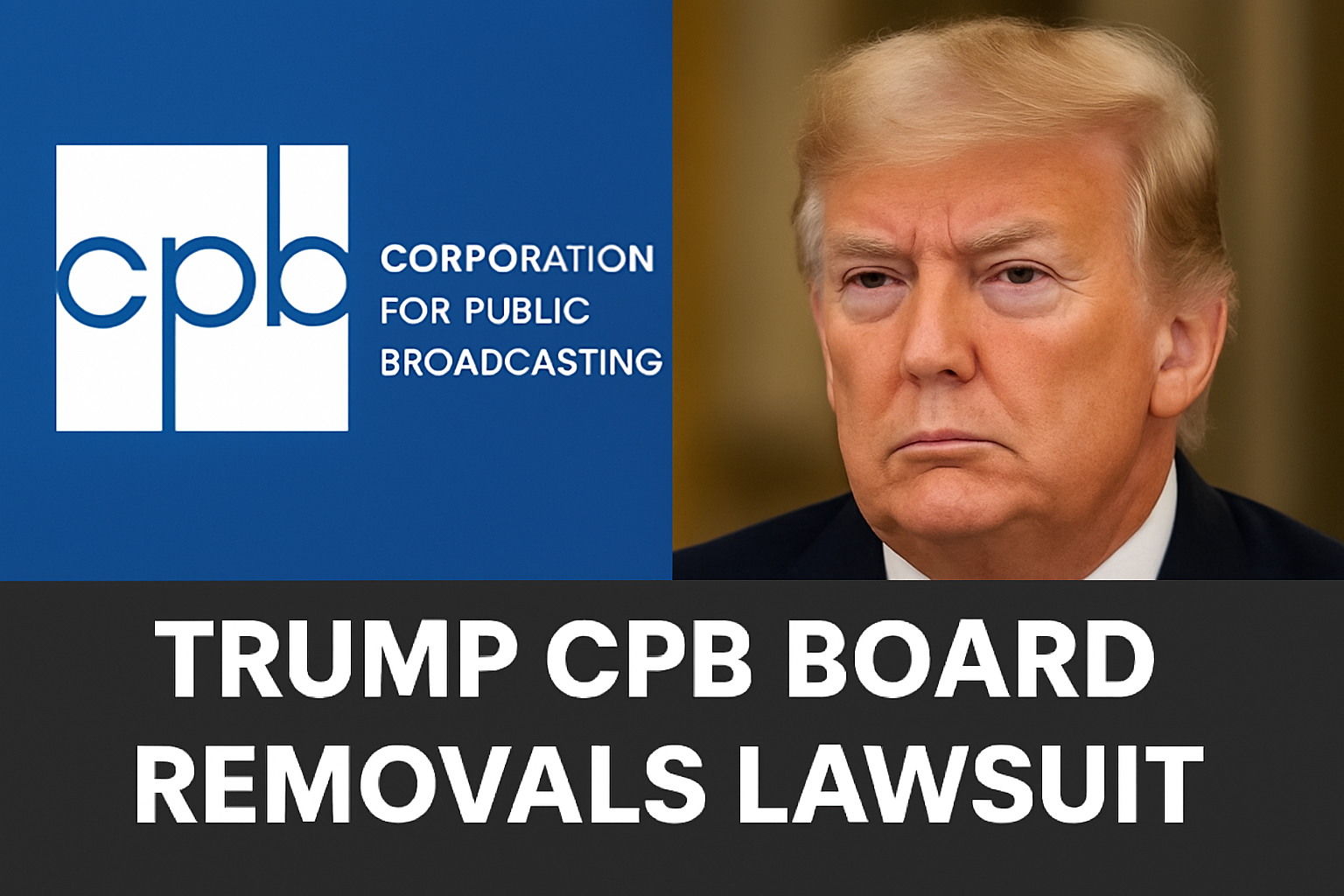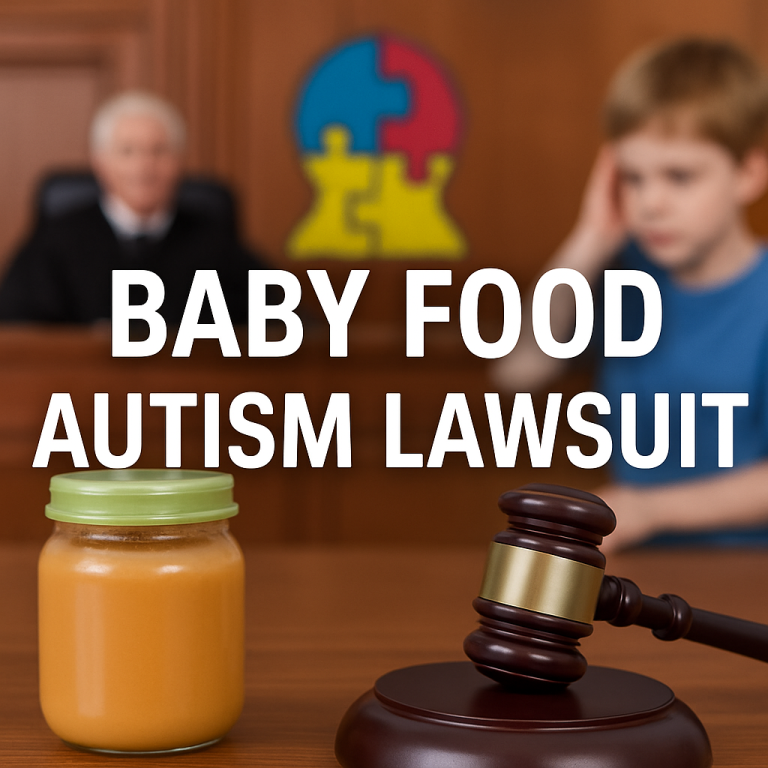The Trump CPB board removals lawsuit has become a high-profile test of executive authority and media independence. In April 2025, President Trump abruptly fired three sitting board members of the Corporation for Public Broadcasting. He sent email notices removing Laura Ross, Diane Kaplan, and Tom Rothman from their posts. The CPB responded immediately. It filed a lawsuit claiming the president had no legal right to act.
The CPB board serves fixed six-year terms under federal law. Members can be removed only for cause. No misconduct existed in this case. The Department of Justice escalated the fight in July 2025. It filed its own lawsuit supporting Trump’s action and demanding repayment of salaries. Millions of Americans rely on CPB-funded programming, including NPR and PBS. This lawsuit threatens that foundation. Families, viewers, and legal experts watch closely. The outcome could decide the future of public broadcasting governance.
What Is the Trump CPB Board Removals Lawsuit?
Congress created the Corporation for Public Broadcasting in 1967. The Public Broadcasting Act protects board members from arbitrary removal. Each serves a six-year term. Removal requires a cause such as misconduct or corruption.
In April 2025, Trump fired three members mid-term. He bypassed Senate oversight. CPB immediately sued, arguing removals violated statutory protections. A federal judge scheduled hearings. The case now centers on whether presidential power overrides congressionally mandated independence.
In July 2025, the Department of Justice filed its own lawsuit. It argued Trump acted within Article II powers. It also asked the court to void the board members’ decisions and reclaim their pay. This created two active lawsuits. One seeks to block removals. The other aims to enforce them.
Why the Lawsuit Matters
The CPB directs federal funding to more than 1,500 public media outlets. These include PBS, NPR, and hundreds of local stations. Millions depend on these outlets for education, news, and emergency alerts.
The lawsuit challenges the principle of independence. If presidents can fire CPB board members at will, public broadcasting risks politicization. Programming could shift with each administration. Trust in public media could erode.
This case also holds constitutional weight. It asks whether statutory limits hold firm against presidential authority. A ruling may impact other independent boards across the federal system. The stakes extend beyond CPB.
CPB’s Key Legal Arguments
The CPB’s lawsuit rests on four central arguments:
- Statutory protection. The Public Broadcasting Act allows removal only for cause. No cause existed here.
- Separation of powers. Congress designed CPB as an independent body. Presidential interference undermines legislative intent.
- Bylaw amendments. The board changed rules after the firing attempt. Now, a two-thirds board vote is required to remove any member. This strengthens its defense.
- Precedent. Courts have protected fixed-term officials in past cases. The CPB argues this protection should apply to its board.
The CPB insists these safeguards preserve independence and trust.
Government’s Legal Position
The Department of Justice claims Trump acted lawfully. It argues Article II of the Constitution grants removal authority. According to DOJ, executive control over appointments must include removal.
The DOJ’s lawsuit makes three demands:
- A declaration that the three members no longer hold lawful seats.
- A ruling that their actions after April 28, 2025, are invalid.
- Repayment of salaries received after removal.
The government frames removal as necessary to align CPB governance with executive policy. It cites recent Supreme Court decisions granting presidents broader removal powers over independent agencies.
Timeline of Key Events
| Date | Event |
|---|---|
| April 28, 2025 | Trump fires three CPB board members via email |
| April 29, 2025 | CPB files lawsuit in federal court |
| May 2025 | CPB amends bylaws to require two-thirds vote for removals |
| June 2025 | Court declines injunction but allows members to remain temporarily |
| July 15, 2025 | DOJ files separate lawsuit seeking removal enforcement |
| Pending | Judge Randolph Moss considers both lawsuits |
Court Responses and Bylaw Changes
Judge Randolph Moss initially declined a temporary injunction. However, he allowed the three board members to remain in place while the case proceeds. He noted the need for stronger governance protections.
The CPB responded quickly. In May 2025, it amended its bylaws. The new rules require a two-thirds vote of the board to remove any director. This applies to all removal attempts, including those initiated by the president.
These changes improved CPB’s legal standing. They demonstrated proactive defense of independence. They also signaled that CPB intends to resist political interference aggressively.
Broader Context and Implications
This lawsuit does not stand alone. It is part of a broader push by Trump to assert greater control over independent agencies. Similar disputes have involved financial regulators, inspectors general, and other boards.
The CPB case has symbolic weight. Public broadcasting represents civic trust and nonpartisan service. If its independence falls, other agencies may follow. Legal scholars warn of a domino effect undermining statutory boards.
This lawsuit also unfolds alongside efforts to defund CPB. In 2025, Congress passed the Rescissions Act, cutting CPB funding. That move could end CPB by 2026. The board removals fight compounds these pressures.
What’s Next in the Trump CPB Board Removals Lawsuit
The federal court in Washington, D.C., will hear both cases. Judge Moss must decide:
- Does the Public Broadcasting Act shield CPB board members from removal?
- Does the president’s Article II authority extend to CPB?
- Are board actions since April 28, 2025, valid?
- Must salaries be repaid if removal is upheld?
The ruling will have far-reaching consequences. It may establish whether statutory protections hold or whether presidential power dominates. Observers expect appeals regardless of outcome. The case could reach the Supreme Court. Public broadcasting’s independence may depend on that final judgment.
Conclusion
The Trump CPB board removals lawsuit represents a pivotal moment for public broadcasting and independent governance. Trump fired three board members without cause. CPB sued, insisting the law protects its independence. DOJ countersued, seeking to enforce the removals and reclaim pay.
The court now weighs two opposing suits. The judge allowed members to remain but refused a full injunction. CPB strengthened its case by amending bylaws. The government presses its constitutional argument.
Millions of Americans rely on CPB-supported media daily. NPR, PBS, and local stations depend on stable leadership and funding. If Trump’s actions are upheld, CPB could lose its independence. If CPB prevails, statutory protections gain new life.
This lawsuit matters for every family that values trusted, independent news. Its outcome may shape public broadcasting for decades. The ruling will decide whether law or politics controls the Corporation for Public Broadcasting.




